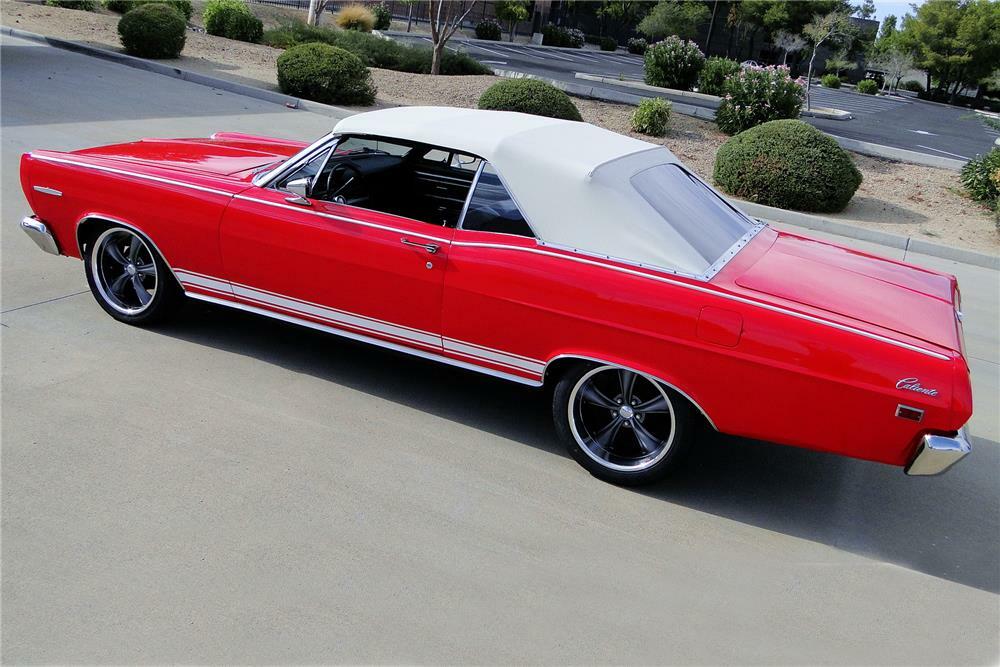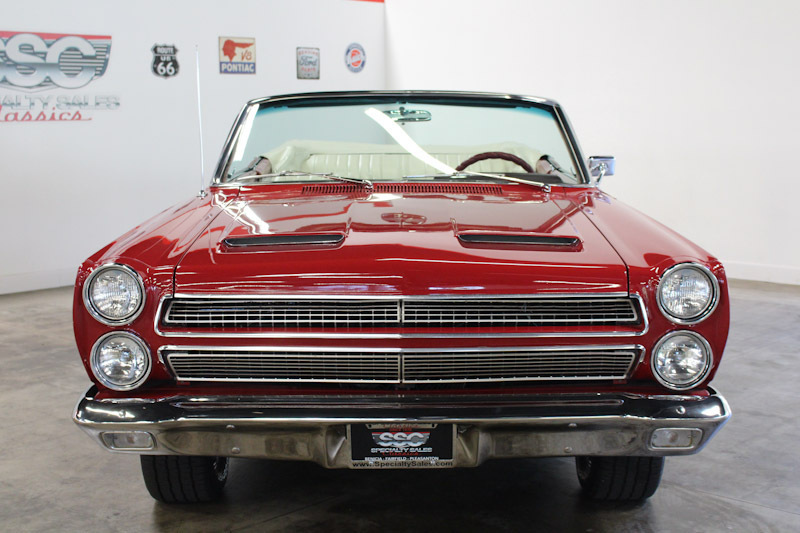The 1966 Mercury Comet Cyclone GT is more than just a classic car; it’s a testament to enduring love and meticulous preservation. Unlike many restoration projects that begin with worn-out vehicles, this particular Comet Cyclone GT led a different life altogether. It served as a faithful family car, braving harsh conditions and accumulating an impressive 122,000 miles on its odometer. From snow-covered roads to sandy beaches, this Jamaican Yellow beauty weathered it all.

A Family Affair
Purchased brand new in Maryland, this Mercury Comet Cyclone GT embarked on a journey that spanned over 42 years and seven states. Its first and only owner, Bill Hammaker, lovingly cared for the car since day one. Despite the challenges posed by various climates and road conditions, Hammaker’s dedication ensured the vehicle’s longevity.

The story of the Comet Cyclone GT’s acquisition is itself a tale of fate. Hammaker initially had his heart set on a cranberry-colored Ford Fairlane GT, but to his disappointment, the car had already been sold. However, a visit to a local Mercury dealer in Hagerstown, Maryland, changed his life forever. He instantly fell in love with a vibrant yellow Cyclone GT displayed on their lot.
An Exquisite Sleeper
The Mercury Comet Cyclone GT, known for its sleek appearance and understated power, epitomized the concept of a “sleeper” muscle car. While its exterior might not have screamed performance, under the hood lay a formidable 390-335hp V-8 engine. Packed with features such as dual exhausts, a fiberglass hood with non-functional scoops, and GT striping and badging, the Cyclone GT offered a thrilling driving experience.

Challenges and Restoration
Over the years, the Comet Cyclone GT faced its fair share of hurdles, most notably rust. However, it had the advantage of never experiencing any major accidents. Bill Hammaker, being a hands-on owner, took care of regular maintenance tasks himself. Oil changes, clutch and brake replacements were just a few of the routine maintenance procedures he performed. The car’s reliability allowed it to undertake long journeys, including a memorable trip from Iowa to Tennessee.
Despite Hammaker’s initial lack of intention to keep the vehicle for such a long time, circumstances changed. When his children went off to college, he decided to store the car away. However, a family dinner conversation about the aging muscle car led to his nephew, Joe Bausman, a skilled technician, offering to restore it. Thus, the restoration journey began.

A Labor of Love
Joe Bausman, a Volkswagen dealer technician from Maryland, dedicated countless hours to bringing the Comet Cyclone GT back to its former glory. The restoration process commenced in July 2004 and reached completion in late summer 2007. The meticulous attention to detail and the personal commitment invested in the project ensured a stunning outcome.
The restoration involved disassembling the vehicle and addressing various rust issues. From the driver’s fender, which had been invaded by sand from a memorable beach drive, to the passenger side door and lower quarter panels, the team painstakingly repaired or replaced the affected parts. Remarkably, the car proved to be largely original, with minimal signs of previous accidents.

Beyond the Surface
Restoring the car’s exterior was a labor-intensive process. The team constructed a custom dolly to support the unit-body during disassembly. Chemical stripping, followed by meticulous sanding, priming, and painting, helped rejuvenate the car’s appearance. Jim Neill of Neill Autobody in Hagerstown, Maryland, played a crucial role in achieving a flawless finish, meticulously applying layers of color and clear coat.
Attention to detail extended to the engine and other mechanical components. The original 390 V-8 engine received careful attention, including block boring, installation of new guides, springs, and valves, as well as new bearings and a polished crankshaft. The suspension remained largely stock, albeit with the addition of polygraphite bushings for enhanced performance. Upgrades were also made to the braking system, with the installation of front disc brakes from Stainless Steel Brakes Corp.

Preserving the Essence
The interior of the Comet Cyclone GT resembled a time capsule, largely thanks to years of indoor storage. The team chose to retain the original components, refurbishing them as needed. While the carpet and seat covers were replaced, the headliner, dash, door panels, and kick panels remained in mint condition, requiring only cleaning and reinstallation. The restoration process extended to smaller details, such as rechroming the armrests and replacing the windshield.

The Finished Masterpiece
The completed restoration project left both Bill Hammaker and the onlookers in awe. The car appeared even more stunning than the day it rolled off the dealership lot. Every aspect of the restoration, from the flawless chrome plating by Paul’s Chrome in Evans City, Pennsylvania, to the impeccable paintwork, displayed an unwavering commitment to excellence.
Bill Hammaker’s Mercury Comet Cyclone GT serves as a testament to the beauty of preserving automotive history. Its story resonates with enthusiasts who appreciate the craftsmanship and dedication required to bring a classic car back to life. The love and care invested in the restoration ensure that this extraordinary vehicle will continue turning heads for years to come.

Frequently Asked Questions (FAQs)
1. Was the 1966 Mercury Comet Cyclone GT a limited edition vehicle?
No, the 1966 Mercury Comet Cyclone GT was not a limited edition car. However, production numbers were relatively low compared to other models, with 13,812 Cyclone GT hardtops built in that year.
2. What made the Mercury Comet Cyclone GT a muscle car?
The Mercury Comet Cyclone GT was considered a muscle car due to its powerful engine, performance features, and aggressive styling. It boasted a 390-335hp V-8 engine, dual exhausts, fiberglass hood with non-functional scoops, GT striping, and badging.
3. How long did the restoration of the 1966 Mercury Comet Cyclone GT take?
The restoration process for the 1966 Mercury Comet Cyclone GT began in July 2004 and was completed in late summer 2007. It involved meticulous disassembly, addressing rust issues, and carefully restoring or replacing various components.
4. What challenges did the restoration team face during the project?
The restoration team encountered challenges related to rust damage, particularly in the driver’s fender, passenger side door, and lower quarter panels. However, despite these hurdles, the team’s dedication and expertise allowed them to successfully restore the vehicle to its original glory.
5. Where can I see the restored 1966 Mercury Comet Cyclone GT?
The restored 1966 Mercury Comet Cyclone GT can be seen at car shows and events. Its exceptional condition and captivating history make it a standout among automotive enthusiasts. Stay updated on local car shows and events to catch a glimpse of this remarkable classic car.



